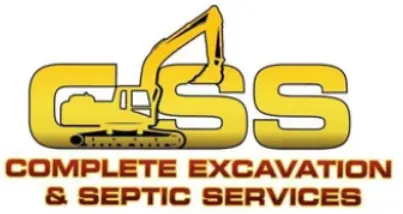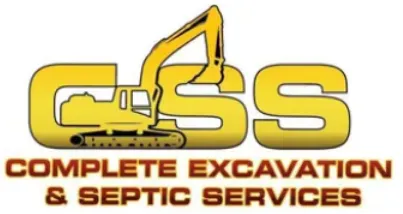
Proudly Serving: Grand Isle, Franklin & Chittenden Counties, VT and Clinton County, NY

Effective Erosion Control Near Clinton County, New York | Comprehensive Guide & FAQs
Erosion Control Near Clinton County, New York: A Comprehensive Guide
Erosion control is vital for maintaining the health and stability of landscapes in Clinton County, New York. The region's diverse topography and varying weather patterns make it susceptible to soil erosion, which can lead to significant environmental and property damage. Whether you are a homeowner, farmer, or business owner, understanding erosion control practices can help you protect your land. In this guide, we’ll discuss effective erosion control methods and answer common questions to help you manage and prevent soil erosion.
The Importance of Erosion Control
Erosion control is crucial for several reasons:
Soil Preservation: Erosion removes the nutrient-rich topsoil necessary for plant growth, impacting agriculture and landscaping.
Water Quality Protection: Sediment from eroded soil can pollute waterways, harming aquatic ecosystems and reducing water quality.
Property Protection: Erosion can damage infrastructure, leading to costly repairs and decreased property value.
Environmental Balance: Erosion disrupts habitats and can lead to loss of biodiversity.
Common Erosion Control Methods
Several methods can effectively control erosion:
Vegetation: Planting grasses, shrubs, and trees helps stabilize soil with their root systems. Ground cover plants are particularly effective at preventing surface erosion.
Mulching: Applying mulch to soil surfaces reduces water runoff and helps keep soil in place.
Terracing: Creating terraces on slopes breaks up long slopes into smaller, more manageable sections, reducing runoff speed and soil erosion.
Retaining Walls: Building retaining walls helps stabilize steep slopes and prevent soil movement.
Erosion Control Fabrics: These materials, placed over soil, prevent erosion while allowing water to pass through.
Silt Fences: Temporary barriers used to capture sediment in runoff water, commonly used on construction sites.
How to Choose the Right Erosion Control Method
Selecting the appropriate erosion control method depends on various factors:
Site Assessment: Evaluate the site to determine the erosion causes, soil type, slope, and existing vegetation.
Severity of Erosion: Identify whether a temporary or permanent solution is needed based on the severity of erosion.
Environmental Impact: Consider the environmental impact of each method. Using native plants for vegetation control is an environmentally friendly option.
Budget: Consider the cost of materials, labor, and maintenance when choosing an erosion control method.
Regulatory Requirements: Ensure that your erosion control measures comply with local regulations and guidelines.
Common Questions About Erosion Control
1. What are the signs of erosion?
Common signs of erosion include:
Visible soil loss or gullying.
Exposed tree roots.
Sediment buildup in nearby waterways.
Patches of bare soil where vegetation has been lost.
Cracks or slumping on slopes.
2. Can erosion control measures be installed at any time of year?
While erosion control measures can be installed year-round, the best time is typically during the growing season, when vegetation can establish itself more easily. However, certain methods, such as mulching or using erosion control fabrics, can be effective in winter to prevent erosion from snowmelt.
3. How long do erosion control measures last?
The longevity of erosion control measures depends on the method used. Vegetation can provide long-term erosion control if properly maintained. Mulching and silt fences are usually temporary solutions, lasting until vegetation is established or construction is complete. Retaining walls and terracing are more permanent solutions but require maintenance over time.
4. Do I need a professional for erosion control?
While some erosion control methods, like planting ground cover, can be done by homeowners, more complex solutions, such as building retaining walls or terracing, may require professional expertise. Hiring a professional ensures the job is done correctly and in compliance with local regulations.
5. What is the role of cover crops in erosion control?
Cover crops are planted to protect and improve the soil between periods of regular crop production. They help prevent soil erosion by covering the soil, improving soil structure, and increasing organic matter. Common cover crops include clover, rye, and vetch.
6. How do I maintain erosion control measures?
Maintenance depends on the method used. For vegetation, regular watering, fertilization, and replanting bare spots are necessary. Mulch should be replenished as needed. Retaining walls and terracing require periodic inspections for stability and repairs if necessary. Silt fences need to be checked and cleaned to ensure they are capturing sediment effectively.
Conclusion
Effective erosion control near Clinton County, New York, is essential for preserving soil health, protecting water quality, and preventing property damage. By understanding the various methods available and how to choose the right one for your specific needs, you can implement effective erosion control strategies. Remember to assess your site, consider environmental impacts, and consult with professionals if needed. With the right approach, you can successfully manage and prevent soil erosion, ensuring a healthy and stable landscape for years to come.
All rights reserved | Privacy policy | Client Support Area
Disclaimer: Septic inspection credit is applied to septic installations only and must be redeemed within 7 days after a written quote provided upon state acceptance of design.
Disclaimer: Septic soil test credit is applied to septic installations only and must be redeemed within 7 days after a written quote provided upon state acceptance of design.



